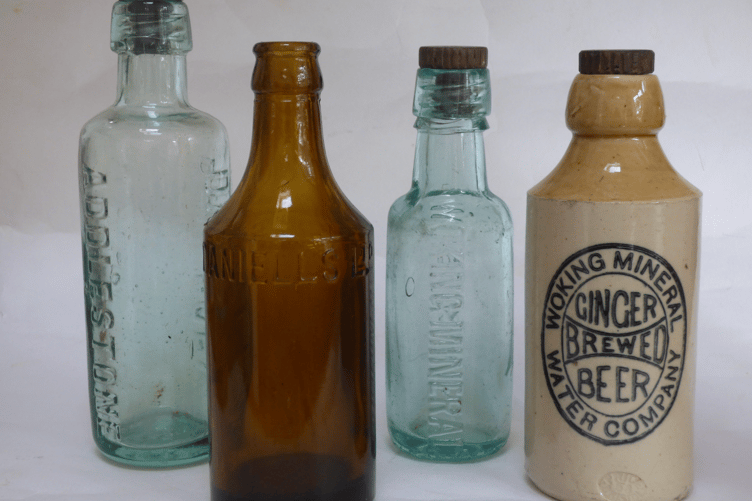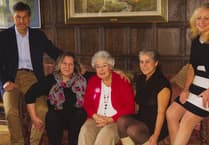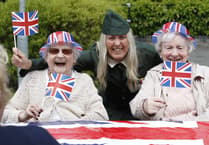Back in the mid to late 1980s, work was apace in restoring the Basingstoke Canal in the Woking area.
Volunteer work parties helped with this as the mud and silt was excavated and work to restore the locks was undertaken.
Ken and Denise Halls, along with their two daughters, were among the willing volunteers, and a good deal of old bottles came to the surface as the work progressed.
They took a quantity of them home, washed them and later stored hem in boxes in their loft.
Recently, Ken contacted me, hearing I collect old bottles, and asked if I would like them as, he said: “It’s time we passed them on to someone else.”
I’ve been collecting old bottles, pots and jars, and so on, since I was in my teens in the 1970s. I have dug them from long-forgotten rubbish tips in various locations in Surrey.
I’d heard from other collectors that when the canal was being restored, a lot of bottles were found.
My long-time interest in such items has also been to research the firms which once put their products in these containers as well as building a picture of the brands (as they are now known) that our forebears would have known well.
Many of these are long gone, while others remain well known to us today.
This is the first of a series of stories on this topic that will be featured in the Peeps, along with some facts about the restoration of the canal and details of the bottles.
Among the various types of bottles found in the canal were those used for carbonated soft drinks.
During Victorian times a thirst for fizzy drinks developed, due to often-unreliable fresh water supplies and also the growth of the Temperance movement, promoting temperance or complete abstinence from consumption of alcoholic beverages.
Most towns had their own mineral water firms which sold their drinks in a variety of bottles, either in glass or stoneware – the latter preferred for the extremely popular drink of ginger beer – although ginger beer was sometimes brewed and contained alcohol.
The photo here features two bottles from the firm Daniells of Addlestone and Chertsey and two bottles from the Woking Mineral Water Company. My good friend and fellow bottle collector Ron Sims undertook research into these two firms several years ago.
Frank Daniells was born in Wiltshire in about 1854, while the 1895 edition of Kelly’s Directory of Surrey lists him as an aerated water manufacturer of Station Road, Addlestone.
It would appear he took over the business from the Randalls brothers, who were listed in the same directory for the years 1887 and 1890.
The firm of Daniells was in business for about 50 years, and the 1907 Kelly’s lists the firm as also being in Guildford Street, Chertsey.
An obituary of Frank Daniells, published in the Surrey Herald on May 21, 1926, included: “It is with sincere regret that we have to record the death of Mr Frank Daniells, which occurred at his residence, White Stack, Chertsey Road, Addlestone, on Sunday. The deceased who was 72 years of age, had been in failing health for some time.”
It added he had served on Chertsey Urban Council for a number of years and was its chairman in 1920-21. His duties included being the “overseer of the poor”.
He is buried in Addlestone Cemetery.
The glass Daniells bottle on the left of the photo has an internal screw thread and dates to about 1900. The brown glass bottle next to it, with a crown cork (or known as a crown cap) closure, would have been used by Daniells in about the 1930s and 40s.
The other bottles are of the Woking Mineral Water Company and feature a glass internal-thread bottle that probably contained fizzy lemonade and a stoneware ginger beer bottle.
The man who owned the Woking Mineral Water Company was a completely different character from Frank Daniells. He was Tom Albert Sanderson.
On the 1891 census he was aged 33 and he and his wife Susan (aged 32) were living in Frensham near Farnham and he was the licensee of the Cricketers pub there.
In about 1898 he changed his profession and was making fizzy drinks from premises in North Road, Woking.
The Woking Mineral Water Company makes its first appearance in a Surrey trade directory in 1899. At some point Sanderson acquired a business partner, Stanley Lambert, who was a chartered accountant from London.
However, it was not long before the business was in financial trouble and the London Gazette of March 12, 1901, listed Sanderson as filing for bankruptcy. It noted he had been living at Oak Villa, Church Street, Woking, but had moved to 36 Church Road, Richmond-upon-Thames. It seems the firm of Daniells took over the business for a couple of years.
But bankruptcy was not the last of Sanderson’s troubles. Records at the National Archives at Kew reveal wife Susan filed for a divorce from her husband on November 28, 1899, on grounds of cruelty.
In her evidence Susan stated that since 1891 Sanderson had violently assaulted and ill-treated her.
On an occasion in 1895 he beat her with a stick and in June 1897 he hit her so violently that three of her teeth were knocked out. In September 1899 he “felled her to the ground grievously bruising her eye and elbow”.
Susan also had evidence of adultery by him on serval occasions. She was successful in her application and she won a final decree on August 22, 1900.
Sanderson then married a widow by the name of Dorothy. He died aged 48 on February 7, 1908 at Aylesbury in Buckinghamshire.
His death certificate states he was a commercial traveller and died of aortic regurgitation, which probably led to heart failure.


.jpeg?width=209&height=140&crop=209:145,smart&quality=75)


Comments
This article has no comments yet. Be the first to leave a comment.